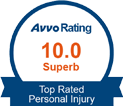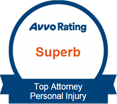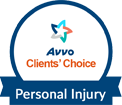The notion of autonomous or self-driving cars is welcome news if you have previously sustained injuries or lost a loved one in an auto accident. The reason for the relief is that 94% of auto crashes stem from human errors like speeding, distraction, performance errors, or inattention, per the National Highway Traffic and Safety Administration (NHTSA). Therefore, introducing driverless cars eliminates the need for drivers, meaning the cases of people sustaining injuries or dying in auto accidents will reduce significantly.
Nevertheless, as autonomous vehicles (AV) increase on the road, car collisions involving them have increased. Sadly, identifying the party to sue for your injuries is challenging when you are in a traffic accident with these cars. It would help if you spoke to an experienced driverless auto accident attorney to understand how lawsuits involving AVs work and the responsible parties.
NHTSA Classification of AVs or Driverless Autos
The NHTSA puts AV technology into five categories, starting with zero. The first category is Level 0, or no automation. In these autos, the human operator is in full command.
The next category is Level 1, also known as function-specific robotics. These vehicles have no less than one command function, like the electronic stability command.
Level 2, or combined function mechanization, automates at least two command functions: lane centering and trip control.
Another class is Level 3, or limited autonomous or self-driving computerization. In this vehicle class, the human driver can resign complete command of all safety-critical functions if they stay alert and resume total control or command of the vehicle when there is impending danger. It is the highest level of AV currently on the market and was commercially available in 2018. The challenge is that accidents still happen in these vehicles because once a human relinquishes command of the car, they are slow to react when there is a warning, contributing to AV accidents.
The other category is level four, or high automation, where AV technology is responsible for safety commands but only in particular conditions or roadways.
As per NHTSA, the last classification of AV technology is Level 5, or complete self-driving computerization. These fully self-driving or driverless cars perform all safety-critical commands and are installed with sensors that monitor the road for obstacles, enabling them to operate in all conditions.
Liability in Autonomous or Driverless Vehicle Accidents
Driverless vehicles have improved traffic safety. Nevertheless, when these cars fail to function correctly, they cause vehicle collisions and injuries. An autonomous or driverless vehicle does not guarantee zero room for human error, product malfunction, hazardous road conditions, or weather.
Who do you sue for liability when you sustain injuries in a driverless auto collision? Is it the car owner, the manufacturer, or a third party?
Several parties can be liable for driverless auto crashes, like most injury claims. Fault or liability depends on many aspects of the case. Generally, AV accidents consist of:
- The person driving a partially self-driving auto.
- A human driver behind the wheel of a regular vehicle.
- The manufacturer or designer of the driverless auto.
Several parties can be at fault for the crash and subsequent injuries. Under the circumstances, the jury apportions a percentage of fault to each party. California adopts the comparative negligence doctrine, allowing you to seek compensation even when you are partially to blame for the crash or harm.
Fault in auto crashes hinges on negligence, as the law requires motorists to exercise caution while on the road to ensure the safety of other road users, pedestrians, obstacles, and drivers.
When drivers fail to exercise their duty of care while at the wheel, they are deemed to have acted negligently if their action or inaction results in a car accident.
In an injury lawsuit, you assume the burden of proof as the plaintiff or claimant. You must prove with a preponderance of the evidence that:
- The at-fault individual had a duty of care toward you.
- The at-fault party violated the obligation by acting negligently.
- The at-fault party’s negligence was the direct cause of your harm or demise of a loved one.
If the court or jury is convinced by your evidence that the defendant is responsible for your harm, they will instruct the defendant to compensate you for all the losses stemming from the crash.
The Operator or Driver inside the Partially Autonomous Car
Most autonomous cars have an autopilot program or self-driving mode. Therefore, vehicles still require an operator behind the wheel to take action in a crisis. The operator can be anyone at the driver’s station; self-driving technology engages if no one is in the car.
California VC 38750 requires all driverless cars to have a security alert program to inform the person behind the wheel when an autopilot program failure is detected. Additionally, the driver must have driving training to take manual vehicle commands. The person must know how to use the steering wheel, brakes, and accelerator.
When an operator neglects to take full command of the vehicle in an emergency, they will be liable for any accident.
Similarly, when the operator or driver takes complete command of the car and acts negligently by running a red light or speeding, resulting in an auto collision, they will be liable for the crash and injuries.
A human driver can choose not to use the autopilot system in the vehicle or override it. Under the circumstances, even though the car is autonomous, it operates like a regular car, and any accident that occurs will be treated like other collisions.
Nevertheless, California accepts applications for entirely autonomous cars without operators, brakes, accelerators, mirrors, or steering.
Car models like Tesla have autopilot programs, which many drivers treat as self-driving. Even though these vehicles are autonomous, drivers should take control or command of them if a system failure is detected or an accident occurs. The car maker requires drivers to remain alert and on the go when the vehicle is on autopilot and be ready for action in an emergency.
Motorists of the Non-autonomous Auto
Non-autonomous cars cause most accidents due to human error. The law requires all drivers or motorists to exercise caution when driving to avoid causing accidents. Therefore, when a motorist fails to exercise reasonable care while behind the wheel, causing an auto accident, you can sue them for compensation. Motorists should watch for obstacles, pedestrians, other cars, and the driverless to avoid causing accidents.
Also, motorists must observe vehicle movement and avoid overspeeding to control the car. Acting negligently by speeding increases the risk of losing control of the vehicle, resulting in a traffic accident. Other traffic violations that can prove negligence by a non-driverless vehicle driver are:
- Road rage.
- Drinking and driving.
- A failure you give the right of way.
- Not stopping at a road traffic signal.
- Distracted driving.
- Operating a car without brake lights.
If the other driver engaged in any traffic violations leading to the crash, they are responsible for your injuries, and you should claim damages.
Driverless Auto Manufacturer
Most driverless or autonomous vehicle accidents stem from a malfunctioning self-driving system. The standard defaults in these cars are system malfunctions, denying an operator complete control over the vehicle after a malfunction, and software bugs.
Autonomous cars rely on sensors, powerful computers, and radar to control speeding, braking, and navigation. Some of the manufacturers testing driverless cars are:
- Tesla.
- Waymo, otherwise called Google.
- Uber.
- General Motors.
If any manufacturers make a driverless auto that causes an accident or injuries, you should sue them under product liability statutes for defective designs or production. Under product liability, the law does not require you to demonstrate that the party was negligent. Instead, you must prove they made a dangerous product that caused a vehicle accident and are strictly liable.
The typical defects associated with cars are mainly in the vehicle's design, production, or noticing defaults but failing to warn customers. In any of these situations, the autonomous car company will be responsible.
However, you should know that these manufacturers are not willing to pay hefty amounts as compensation for injury claims. They are eager to bring their best legal team to fight your claim to avoid payment or reduce the funds you claim. Therefore, right after the accident, you must contact an injury attorney law firm that will advise you accordingly and face the manufacturer’s team in court.
Government Entity
When hazardous roadways or damaged road signs cause an AV accident, you should sue the government entity responsible for road maintenance. Claims against government entities are outlined under the California Tort Claims Act (CTCA). Because of the sovereign immunity government entities enjoy, it is difficult to pursue a CTCA without the help of an experienced attorney.
Reasons Driverless Vehicles Cause Accidents
Your driverless auto accident attorney must have the capacity to identify possible defendants in these lawsuits by establishing the cause of the accident. It becomes easy to know which parties to sue for compensatory damages. The risks that contribute to autonomous vehicle accidents are:
1. Failure By the Auto to Recognize Obstacles
Driverless auto technology utilizes several sensors to identify weather conditions, road conditions, stop signs, speed, and the direction of other cars and obstructions. Nevertheless, if there is hazardous weather, dangerous road conditions, excessive traffic, deteriorated road signs, or malfunctioning car tags, the driverless car sensors fail to identify obstacles leading to vehicle accidents. For this reason, the law requires the autonomous car to have an operator even when it is in autopilot mode.
2. Artificial Intelligence Learning Problems
Autonomous car technologies are still in their infancy, with the AI used in the cars unable to respond to emergencies. Even with the risk of auto accidents in AVs being reduced significantly compared to non-autonomous cars, accidents happen when these driverless vehicles experience AI learning problems.
3. Faulty Design and Production Problems
Your defense attorney will review the distribution chain from product design, production, assembly, and preparation of product manuals and tutorials to identify flaws that could have contributed to technology failures and accidents. If inadequate inspection or monitoring is done in the production chain, the attorney can identify the responsible parties and file an injury claim to seek compensation for the car accident.
4. Operator Negligence
Even though autonomous vehicles have enhanced traffic safety, they have their flaws. For these reasons, vehicle manufacturers require a human driver on the steering wheel to react appropriately and take full command of the vehicle in an emergency. However, accidents happen when an emergency occurs, and the driver is reckless or distracted. Under the circumstances, the driver is to blame.
Damages Available in Driverless Auto Accidents
An injury claim seeks to recover compensatory damages for all the costs or expenses incurred due to a car accident. The damages are classified as economic and general damages. The damages are paid to cover financial losses incurred due to the vehicle accident. The compensatory damages in a driverless auto collision are:
- Car damage.
- Medical bills.
- Attorney fees.
- Court fees.
- Loss of limb.
- Loss of life enjoyment.
- Physical therapy.
- Lost income.
- Pain and anguish.
- Lost future income.
- Future medical expenses.
- Emotional distress.
- Ambulance fees.
- Occupational therapy.
- Medication.
- Medical accessories.
Additionally, you can receive punitive or exemplary damages if the defendant acted out of ordinary negligence. The payments are available if the defendant acted maliciously, fraudulently, with extreme recklessness, or oppressively. These extra damages are awarded on top of the financial expenses and medical costs.
Fatal Driverless Vehicle Collisions
When you lose an immediate family member due to a driverless auto accident, you or other descendants of the deceased can file a wrongful death suit to hold the parties at fault responsible for their negligence.
Not all relatives of the deceased are eligible for wrongful death damages or can file this lawsuit. Only spouses, children, the deceased’s estate, and domestic partners can file this claim. Besides, the grandchildren can seek wrongful death compensation if the deceased's children are dead.
The financial compensation offered in these claims does not bring a loved one back to life. However, the damages enable the descendants of the deceased to live comfortably after the loss. The reimbursements include the following:
- Burial expenses.
- Funeral expenses.
- Loss of monetary support offered by the deceased.
- Companionship loss.
- Spousal support loss.
- Loss of affection.
Proving Parties Liable for Driverless Auto Accidents
Every motorist involved in an auto accident has their side of the story on the cause of the crash. Nevertheless, identifying at-fault parties in driverless auto crashes is challenging, primarily if the accident happens when the vehicle is in self-driving or autopilot mode.
If your claim is disputed, your injury attorney and the insurance firm must conduct independent investigations. When investigating these crashes, your attorney must bring in accident reconstruction experts to evaluate the scene and the vehicle wreckage to establish the cause and give a professional opinion on those liable. You can strengthen your claim by bringing in the expert to testify in court. These experts can paint a vivid picture in the jury's minds to convince them to award maximum compensation.
The Safety of Driverless Autos
Like non-autonomous cars, driverless cars cause accidents that leave victims with life-altering injuries or death. Driverless automobiles have recently been available commercially, but only a few are available.
Nevertheless, as the number of self-driving cars continues to increase, cases of driverless auto crashes and deaths have been reported. There have only been four confirmed deaths stemming from autonomous vehicle collisions. The notable fatalities include:
- January 2016 driverless Tesla Model S that killed a street sweeper in China.
- The May 2016 case of Joshua Brown, who ran into an 18-wheeler truck while driving a Tesla Model S on autopilot mode.
- March 2018 case of a pedestrian hit and killed by a Volvo fitted with the Uber self-driving program.
- In the March 2018 case of Walter Hang, he was killed when his Tesla Model X crashed in California while on autopilot mode.
Several AV or semi-autonomous accidents or near-misses have been reported, meaning that despite AVs enhancing road safety, any automobile using the road is at risk of causing an auto crash or knocking down a pedestrian or bicyclist.
The Importance of Retaining an Injury Attorney in Driverless Auto Accident Claims
AV technology is unbelievably technical. Therefore, you must understand this technology to maneuver an injury claim case involving a driverless car. Also, you need knowledge of product liability and auto accident statutes. Therefore, unless you practice California injury law, you should consult with an experienced attorney or law firm if you must pursue a claim. An attorney will do the following:
- Hire consultants and accident reconstruction experts to investigate the driverless auto collision.
- Explain various levels of AVs.
- Identify the individuals at-fault or responsible for the collision.
- Bring a claim with your insurer, at-fault party's insurer, or third party.
- Monitor the timelines for the claim so that they can file it as provided for in the statute of limitations.
- Document all economic losses and negotiate fair compensation.
- File an injury lawsuit if the negotiations fail.
Vehicle collisions are generally confusing, particularly to the victim. The cases become even more complex when a driverless car is involved because identifying the at-fault party becomes challenging. Therefore, take action immediately and contact a profound injury attorney for guidance.
Find the Right AV Accident Injury Attorney Near Me
It is confusing to be in a car collision involving a driverless vehicle. Proving fault or product liability will be extremely challenging without an attorney. At The Personal Injury Attorney Law Firm, we understand how autonomous California car accident claims work and can help you build a successful one. If you have injured or lost a loved one, do not face the manufacturer or other liable individuals alone. Contact us at 800-492-6718 for a no-obligation consultation.
 800-492-6718
800-492-6718







